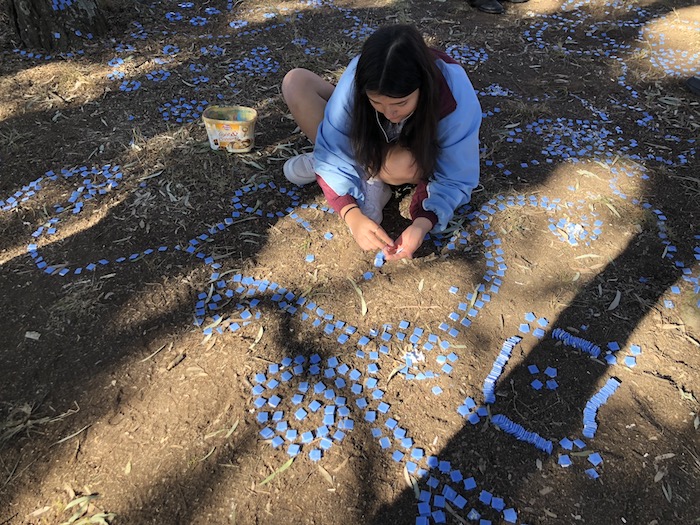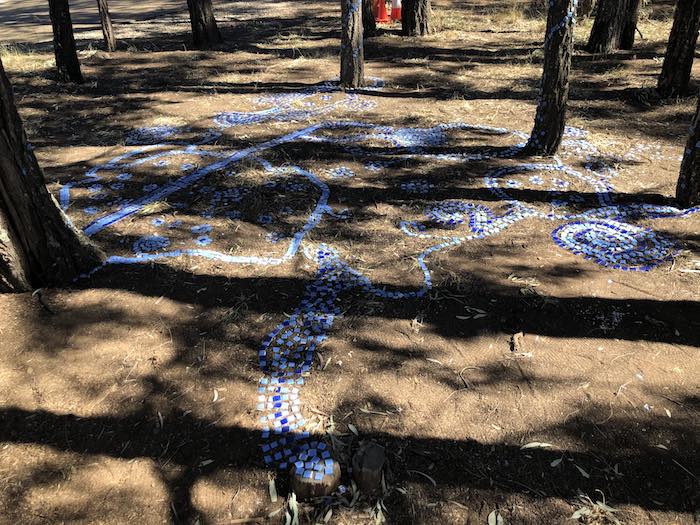Your Public Art Project

Your Public Art Project offers a unique opportunity for Kaldor Public Art Projects to connect with primary and secondary schools across NSW during our 50th anniversary year. Our extended reach has led to rich engagements with students from Bourke, Dubbo, Parkes, Wilcannia, Western Sydney and Sydney’s Inner West.
Kaldor Public Art Projects’ physical archive serves as a jumping-off point for the program. It enables students to understand diverse approaches to artmaking and welcomes new ways of ideating and conceptualising what is possible in the realm of public art.
Learners are introduced to Your Public Art Project through four specially designed video resources, which unpack our archives through four key themes—site/environment, scale, community and time. The video resources are presented by Australian artist David Capra and his beloved 8-year-old dachshund, Teena. The playful and whimsical vision that David brings to the archives is a conscious attempt at making the content accessible for all learners, introduced to vastly new concepts and methods of artmaking for the very first time.
Community networks and connections are central to Your Public Art Project. It is our aim to serve as a catalyst for encouraging meaningful relationships between schools and their wider community. Through the project, schools have established mutually beneficial exchanges with The Local Men’s Shed, Bourke; Inner West Council; Penrith Regional Gallery and Broken Hill Regional Art Gallery, amongst others.

Another key aspect of the program are our incursions, which address how the established themes—site/environment, scale, community and time—come together in the creation of a public artwork. I have been facilitating incursions across NSW over the past two months. From 22–25 June, I spent time in Broken Hill and Dubbo facilitating programs in partnership with the Broken Hill Regional Art Gallery and the Western Plains Cultural Centre.
The incursion program is experimental in nature and process-based. The driving intention is to encourage students to observe their environment (the classroom) in detail and to identify specific locations that had been ignored, forgotten, or required love and/or a new use. Next, the students intervened in these spaces through assigning ‘instructions for engagement’ at each selected site. The instructions were next performed by the students, as they interpreted the words in their own unique ways.
The beauty of being experimental and process-based is that the workshop has the capacity to be responsive to the needs of the group. For example, the students from Bourke Public School are working to reclaim their cultural heritage and through the project have gathered knowledge about signs, symbols and totems, which are of great significance to their community. To ensure the incursion program was most beneficial for this group, students were encouraged to use lines and symbols as another visual device, to guide the body to move in new and unexpected ways. Through building a safe, responsive and collaborative environment for knowledge exchange and learning, the students felt empowered to share their knowledge systems with me, including new words in language and culturally specific dance and movement.
Your Public Art Project is still underway and is a continual process of questioning and reflecting.
As an organisation, we ask ourselves:
How can we make our archives and our history relevant to diverse students across NSW?
How can we best support the development of local networks and community partnerships?
How can we encourage schools and learners to take authorship over their projects and make it relevant for them?
We hope to address some of these queries, with our invited students and The Arts Unit, NSW Department of Education, at a special showcase event for Your Public Art Project to be held on 18 November 2019 at the Art Gallery of NSW.
This exciting new program would not have been possible without the generous support of our Major Education Partner, Gandel Philanthropy. Special thanks also to the NSW Department of Education for their enthusiasm and support.
Words by Lleah Smith, Education and Public Programs Coordinator, Kaldor Public Art Projects
